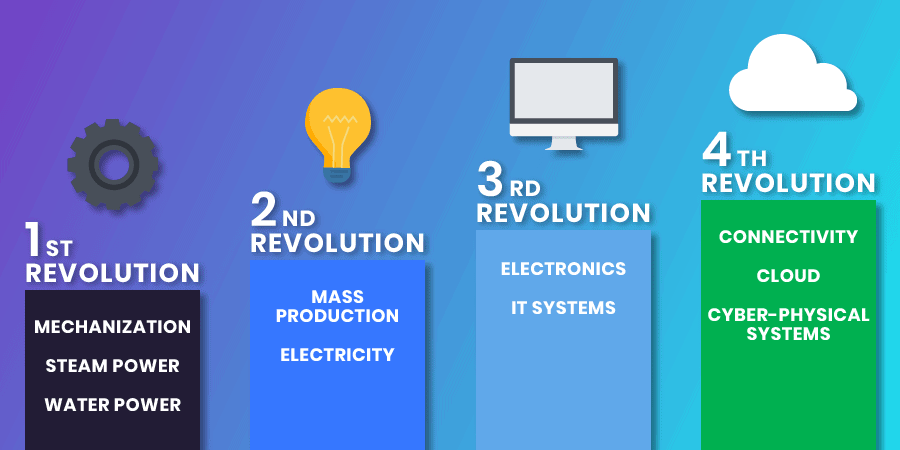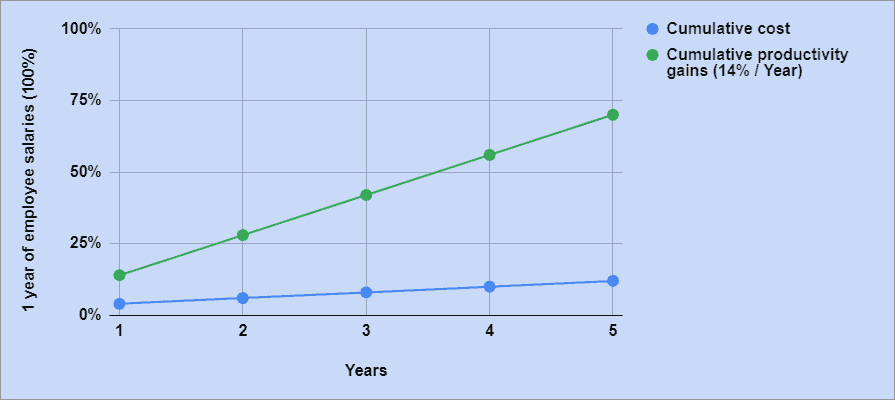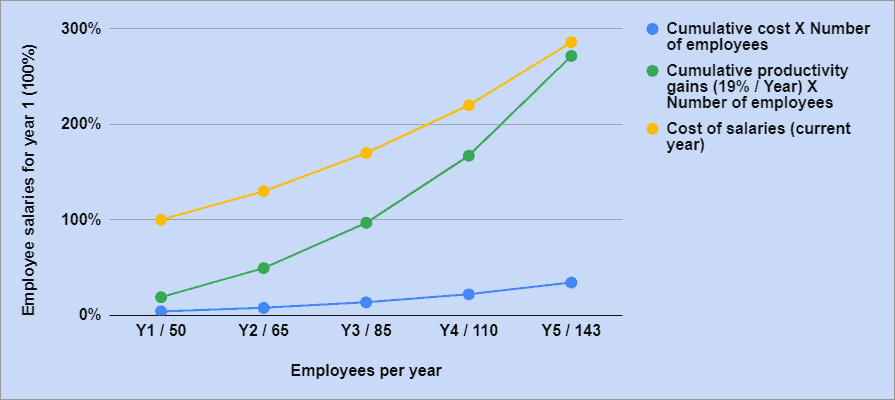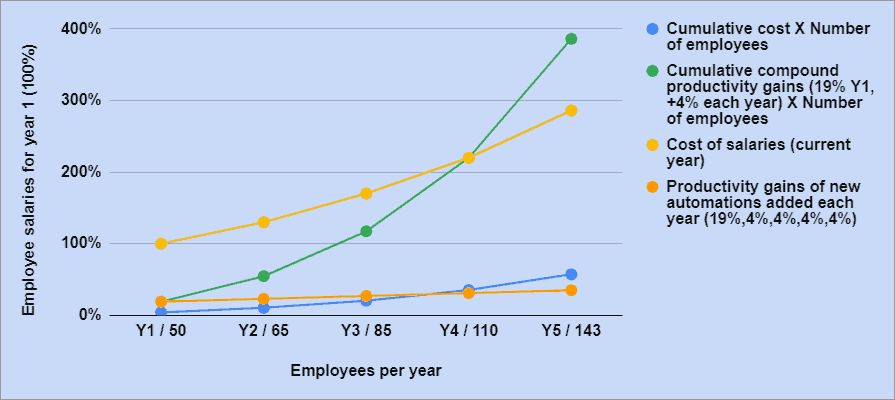

How can you identify the best areas to spend time on Digital Transformation initiatives?
Where should you invest in Digital Transformation to ensure the best return on investment?
One answer to both of these questions is automation.

Automation is when you take something that was done manually and automate it so that it gets done automatically without human intervention.
Here, we can use the analogy of the four Industrial Revolutions:

When you are able to identify repetitive actions done by people or isolated systems and are then able to automate and connect them, your productivity increases by the total sum of all these actions for the remainder of your organization’s lifespan — or until those actions or processes are no longer needed for your operations.
This means that companies, governments, and nonprofit organizations can make significant productivity gains by automating some of their processes. For example:
Therefore, the work, time, and resources invested in setting up automated processes can deliver productivity gains that are multiples (X) of the initial investments.
When bringing Digital Transformation to an organization, making all stakeholders aware of this dynamic can be an important part of getting people on board and maximizing the chances of success.
Alright, now, I apologize, but we’re going to do some math.
For the purpose of this exercise, we are going to use numbers reported by Salesforce related to the increase of productivity of customer service and sales team to calculate a ROI whether we are in a stable company (compound gains) or a high growth company (exponential gains). To be more conservative, we are going to cut these numbers in half:
Sources:
*Average improvements based on a Salesforce survey of 10 500+ customers between 2014 and 2016.
**Average improvements based on the survey of 7000+ Salesforce customers between 2015 and 2017. https://www.salesforce.com/ca/products/sales-cloud/why-salesforce/
Let’s take a stable manufacturing company employing 50 customer service agents.
Using a CRM, they are able to automate some of their customer service processes, which could include, for example:
Once the CRM is in place, the productivity gains are 14% (see “Math” section above). The solution cost is equivalent to 2% of agents’ salaries, but 4% for the first year, including the cost of implementation. To get an idea of potential return on investment, we take a look at the cumulative cost and productivity gains below, compared to the salaries of solution users, which is used as a baseline (salaries = 100%).
Linear cumulative cost and productivity gains vs. 1 year of employee salaries (100%)

While the company is not growing significantly, we can still notice a consistent return on investment year after year, representing 7 times the cost.
For the following example, let’s use a software company employing 50 sales reps and showing a high growth rate of 30% per year.
Using a CRM, the company is able to automate some of its sales processes, which could include, for example:
Once the CRM is in place, the productivity gains are 19% (see “Math” section above). The solution cost is equivalent to 2% of agents’ salaries, but 4% for the first year, including the cost of implementation. To get an idea of potential return on investment, we take a look at the cumulative cost and productivity gains below, compared to the salaries of solution users, which is used as a baseline (salaries = 100%). We also have to account for the annual growth rate of 30%, which we’ll translate as the company hiring 30% more sales reps every year (for a total of 50, 65, 85, 110, and 143 sales reps over 5 years).
Linear cumulative cost and productivity gains X growth in number of employees vs. employee salaries of the first year (100%) and current year

We notice here that, as a company scales with growth, the productivity gains scale with the company.
In keeping with the software company example… let’s say that, after Year one, they did the smart thing and looked for other automation opportunities using the same CRM and every year thereafter made their sales reps 4% more productive, for total productivity gains going from 19% in year 1, to 35% in year 5 (19%, 23%, 27%, 31%, 35%).
In this scenario, the cost is equivalent to 4% of salaries (2% for the solution, and 2% for the continuous implementations). Let’s take a look at how adding additional automations every year— even small ones that only add 4% more productivity every year— generates significant compound gains (as in compound interest).
Compound cumulative cost and productivity gains X growth in number of employees vs. employee salaries of the first year (100%) and current year

We notice here that a CRM enables a company to automate many processes, while the cost remains fairly stable. Renovating a factory to increase production is very costly; in comparison, adding more automation to a CRM is very economical.
Companies have an interest in finding more opportunities for automation, which can result in compound gains over time and even higher return on investments for CRMs and other similar solutions.
Looking at return on investment, we see that the ROI covering the cost is easily achieved within the first year for all scenarios. Now, this implies that adoption is sufficient among the teams using the CRM to take advantage of the benefits of automation.
If there is no adoption, there are no productivity gains.
Another striking element in these projections is that the cumulative productivity gains equal and surpass the total value of employee salaries for 1 year quite rapidly. Even in the first chart showing linear gains within a stable company, the productivity gains would be equal to one full year of salaries at the end of the 7th year. In the other two scenarios, this is achieved even faster (see the yellow line in the graphs):
At which point do the cumulative productivity gains equal 1 year of current employee salaries?
Remember, this was supposed to be a conservative projection based on HALF (50%) of the results reported by Salesforce.
When brainstorming with your teams as to where to put time and effort in Digital Transformation, look for the automation opportunities that would yield the most results.
They could include:
By identifying the right opportunities and acting on them, you can leverage the automations of the 4th Industrial Revolution to generate significant gains for your organization.
Accelerate your continuous improvement